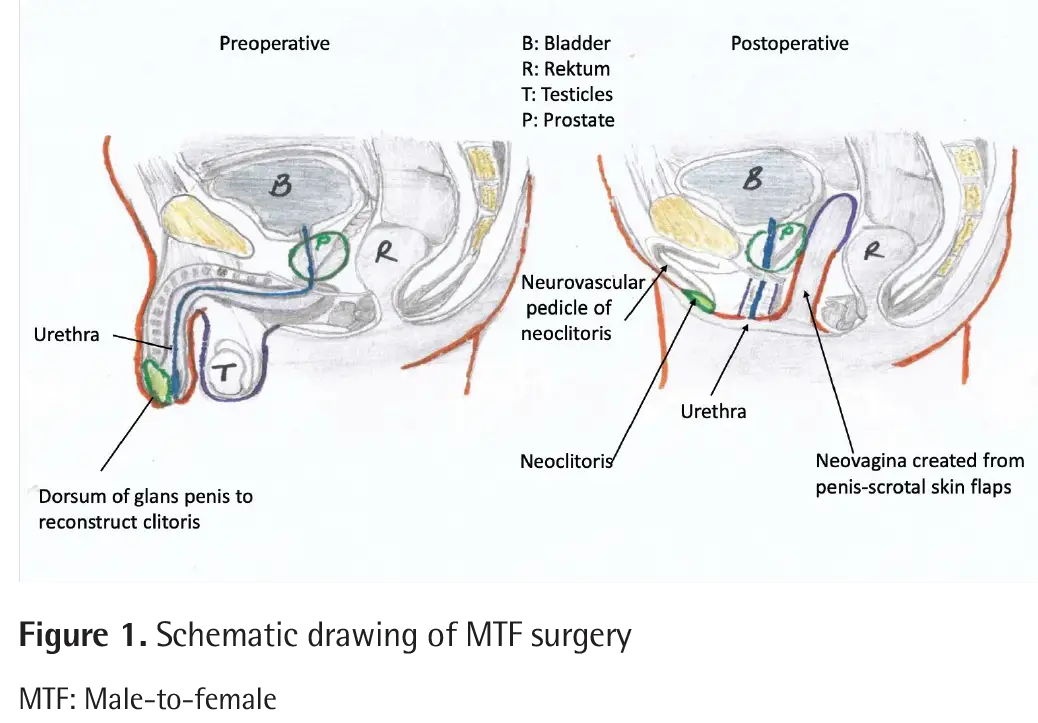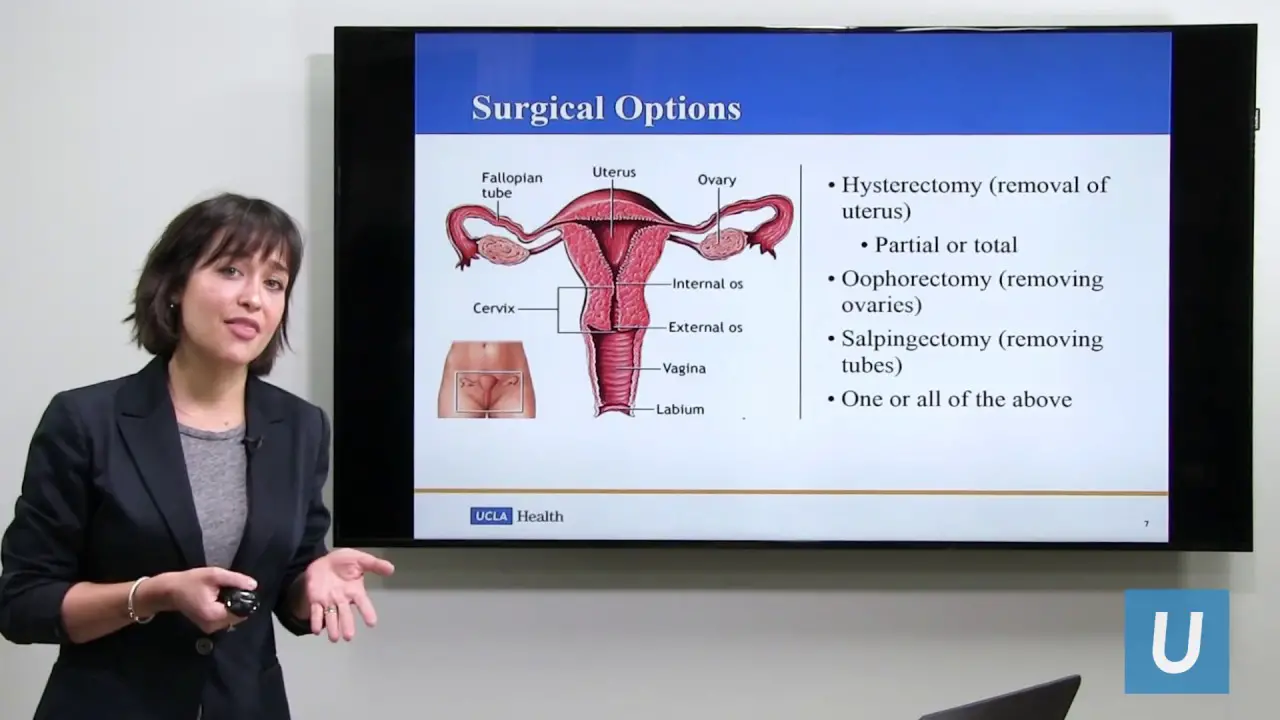Transgender surgery, also known as gender reassignment surgery, is a transformative journey that allows individuals assigned male at birth to transition to a female identity through a series of surgical procedures. This process involves various techniques and steps to achieve gender affirmation and a more feminine appearance.
In male to female transition surgery, the procedure typically includes the removal of the testicles and a significant portion of the penis. The urethra is shortened, and the remaining penile skin is used to create a functional vagina. Additionally, a neoclitoris can be formed using parts of the penis to enhance sexual pleasure and sensitivity.
Conversely, female to male transition surgery involves the removal of the breasts, uterus, and ovaries. Genital reconstructive procedures can be performed using either the clitoris or free tissue grafts to construct a penis. These procedures aim to create a more masculine appearance and align an individual’s physical body with their gender identity.
Hormone therapy plays a crucial role in the transition process. For male to female individuals, estrogen is administered to facilitate the development of secondary sex characteristics, such as breast growth and redistribution of body fat. Female to male individuals may receive androgens to promote the growth of facial and body hair, deepen the voice, and enhance muscle mass.
It is important to note that transgender surgery can be a costly endeavor. The expenses for female to male surgery can range up to $75,000, while male to female surgery typically costs between $40,000 and $50,000. Additionally, individuals may face challenges and loss in relationships and employment as they undergo this transformative process.
While the overall rate of regret among individuals who have undergone transgender surgery is rare, it is essential to have proper medical care and support throughout the journey. Reliable statistics on the number of gender-reassignment procedures performed each year in the United States range from 100 to 500.
The male to female transition process typically begins with hormone therapy, which involves the use of estrogen to stimulate the development of feminine features such as breast growth and softening of the skin. This therapy plays a crucial role in aligning an individual’s physical appearance with their gender identity. Hormone therapy can also help alleviate gender dysphoria, which is a significant aspect of gender affirmation.
Once hormone therapy has been initiated, individuals may also opt for various gender affirming surgeries to further enhance their transition. These surgeries aim to feminize their appearance and create a physical representation of their true selves. Common procedures include breast augmentation, facial feminization surgery, and body contouring.

It is important to note that each person’s transition journey is unique, and the specific surgeries chosen may vary based on individual preferences and goals. Consulting with experienced healthcare professionals who specialize in transgender surgery techniques is crucial to ensure that the most suitable options are considered and the highest quality of care is provided.
Overall, the male to female transition process is a deeply personal and transformative journey. It is a testament to the resilience and strength of individuals who are determined to live authentically, despite the challenges they may face. Through hormone therapy and gender affirming surgeries, they are able to align their physical appearance with their true selves, leading to improved mental well-being and a sense of gender affirmation.
Understanding Gender Reassignment Surgery
Gender reassignment surgery for male to female individuals involves several procedures aimed at feminizing the body, including genital reconstruction and other feminizing surgeries. The surgical process typically begins with the removal of the testicles and most of the penis, followed by the shortening of the urethra. To create a functional vagina, surgeons utilize skin grafts from the penis. Additionally, a neoclitoris can be constructed using parts of the penis.
On the other hand, female to male individuals undergoing gender reassignment surgery have their breasts, uterus, and ovaries removed. Genital reconstructive procedures are then performed, utilizing either the clitoris or free tissue grafts to construct a penis. These surgical interventions aim to align an individual’s physical appearance with their gender identity, providing them with a more authentic sense of self.
It’s important to note that gender reassignment surgery is often accompanied by hormone therapy. For male to female individuals, the administration of estrogen helps develop secondary sex characteristics such as breast growth and softening of skin. Conversely, female to male individuals may undergo hormone therapy involving androgens to promote facial hair growth and voice deepening. These hormone treatments not only aid in the physical transition but also alleviate gender dysphoria, contributing to an overall improvement in mental well-being.

Like any surgical procedure, gender reassignment surgery carries potential risks and complications. These can include bleeding, infection, scarring, nerve damage, and unsatisfactory cosmetic results. It is crucial for individuals considering these procedures to carefully weigh the benefits against the potential challenges and consult with experienced medical professionals who specialize in transgender healthcare.
Cost is also a significant consideration for those seeking gender reassignment surgery. Prices can vary widely depending on the procedures performed, the healthcare provider, and geographical location. On average, female to male surgery can range from $40,000 to $75,000, while male to female surgery may cost between $40,000 and $50,000. It’s essential for individuals to explore their insurance coverage options and financial assistance programs to help alleviate some of the financial burden.
Table: Estimated Gender Reassignment Procedures in the United States
| Year | Number of Procedures |
|---|---|
| 2017 | 100 |
| 2018 | 250 |
| 2019 | 400 |
| 2020 | 500 |
Despite the challenges and potential risks, gender reassignment surgery has been reported to significantly improve the well-being and quality of life for many transgender individuals. It is a deeply personal decision that should be approached with careful consideration and support from healthcare professionals, loved ones, and the transgender community.
By providing access to gender-affirming surgical interventions and comprehensive medical support, we can help individuals transition physically and emotionally, ensuring they can live their lives authentically and in alignment with their true selves.
Genital Reconstruction in Male to Female Surgery
Genital reconstruction in male to female surgery often involves a procedure called vaginoplasty, which uses the skin from the penis to create a functional vagina. This surgical technique allows individuals to achieve a more feminine appearance and experience greater gender affirmation. Vaginoplasty is a complex and intricate procedure that requires the expertise of a skilled surgeon.
During vaginoplasty, the surgeon removes the testicles and most of the penis, shortens the urethra, and uses the skin from the penile shaft to construct the vaginal canal. The neoclitoris, which provides sexual sensation, is created by preserving and reshaping parts of the penis. The overall goal of the procedure is to create a functional and aesthetically pleasing result that aligns with the individual’s gender identity.

Vaginoplasty is a highly individualized procedure, as the surgeon takes into account factors such as the patient’s anatomy, aesthetic preferences, and desired sexual function. The technique may vary depending on the specific needs and goals of the individual. It is important for patients considering vaginoplasty to consult with experienced surgeons who specialize in transgender surgery to ensure the best possible outcome.
| Advantages of Vaginoplasty | Considerations for Vaginoplasty |
|---|---|
|
|
Vaginoplasty is a major step in the male to female transition process and plays a significant role in achieving a more authentic gender identity. It is essential for individuals seeking this procedure to thoroughly research and consult with experienced healthcare professionals in order to make informed decisions and ensure the best possible outcome.
Surgical Options for Female to Male Transition
Female to male transition surgery offers a range of surgical options, including chest masculinization to remove the breasts and genital reconstructive procedures to create a more masculine appearance. Chest masculinization, also known as “top surgery,” involves the removal of breast tissue and reshaping the chest to create a flatter, more masculine contour. This procedure can greatly enhance the individual’s self-image and help alleviate their gender dysphoria.
In addition to chest masculinization, genital reconstructive procedures are also available for individuals looking to align their physical appearance with their gender identity. One common procedure is metoidioplasty, where the clitoris is released to create a small penis. This procedure may be suitable for individuals who desire a more natural and functional genital appearance. Another option is phalloplasty, where a penis is constructed using either the clitoris or free tissue grafts from other parts of the body. This procedure involves multiple surgical stages and requires a longer recovery period.
Patients considering female to male transition surgery should consult with a skilled and experienced surgeon to discuss their goals, expectations, and the potential risks and benefits of each procedure. It is crucial to have a thorough understanding of the surgical process and realistic expectations for the results. Each individual’s journey is unique, and it is important to choose the surgical options that best fit their needs and desired outcome.
| Procedure | Description |
|---|---|
| Chest Masculinization | Removal of breast tissue and reshaping of the chest to create a flatter, masculine contour. |
| Metoidioplasty | Release of the clitoris to create a small penis, suitable for individuals seeking a more natural and functional appearance. |
| Phalloplasty | Construction of a penis using the clitoris or free tissue grafts, involving multiple surgical stages and a longer recovery period. |
Female to male transition surgery is a complex and personalized process. It is important for individuals to have a supportive healthcare team and access to the necessary resources and information to make informed decisions about their surgical options. With proper medical care and support, individuals can embark on their journey towards aligning their physical appearance with their true gender identity.

Hormone therapy, specifically estrogen, plays a crucial role in the male to female transition process by promoting the development of feminine characteristics and alleviating gender dysphoria. By introducing estrogen into the body, individuals undergoing male to female transition can experience changes such as breast development, redistribution of body fat to create a more feminine figure, and a decrease in body hair growth. These physical changes often contribute to a greater sense of gender affirmation and self-acceptance.
In addition to feminizing physical characteristics, estrogen therapy also helps address gender dysphoria by aligning an individual’s biological sex with their gender identity. This can lead to improved mental well-being and a greater sense of overall gender congruence. Hormone therapy is typically administered under the supervision of a qualified medical professional who monitors hormone levels and adjusts the dosage as needed to ensure optimal results.
It is important to note that hormone therapy is not a standalone solution for male to female transition. For many individuals, it is used in conjunction with other gender-affirming procedures such as gender reassignment surgery and voice training to achieve the desired physical and emotional transformation. The combination of hormone therapy and surgical interventions offers a comprehensive approach to gender affirmation, allowing individuals to fully embrace their true selves.
While hormone therapy is generally safe and effective when administered properly, it is important for individuals considering male to female transition to consult with medical professionals experienced in transgender care. These healthcare providers can provide guidance, support, and monitoring throughout the entire hormone therapy process, ensuring the best possible outcomes for each individual’s unique journey.
Cost and Complications of Transgender Surgery
Transgender surgery can be a significant financial investment, with female to male procedures costing up to $75,000 and male to female surgeries ranging from $40,000 to $50,000. These costs include pre-operative assessments, surgical fees, anesthesia, post-operative care, and medications. Insurance coverage for transgender surgeries varies, with some providers offering partial or full coverage, while others may exclude them altogether. It is essential for individuals considering these procedures to thoroughly research insurance coverage and explore available options to manage the financial aspects.
While gender reassignment surgeries offer life-changing benefits, it is important to note that, like any surgery, they carry certain risks and potential complications. Complications can arise during or after the procedure, and may include bleeding, infection, scarring, nerve damage, or adverse reactions to anesthesia. It is crucial for patients to be informed about the potential risks and discuss them with their healthcare providers before making a decision.
Furthermore, individuals undergoing gender reassignment surgery may face challenges beyond the physical aspects. The emotional and psychological impact of the transition process, as well as the potential loss of relationships, employment discrimination, and societal stigma, can be significant. It is vital for patients to have a strong support system, including mental health professionals, friends, and family, to navigate these challenges successfully.

Reliable statistics on the outcomes and satisfaction levels of transgender surgeries are difficult to obtain due to the limited research in this field. However, it is estimated that approximately 100 to 500 gender-reassignment procedures are performed in the United States each year, suggesting that the demand for these surgeries continues to grow. Despite the potential challenges and risks involved, many individuals report a significant improvement in their quality of life and sense of self after undergoing gender-affirming procedures.
| Procedure | Estimated Cost |
|---|---|
| Female to Male Surgery | $75,000 |
| Male to Female Surgery | $40,000 – $50,000 |
Quote:
“Gender reassignment surgery offers individuals an opportunity to align their physical appearance with their gender identity. While the financial investment and potential complications should be carefully considered, many individuals find that the benefits far outweigh the challenges. It is essential for those considering these procedures to have access to comprehensive information, supportive healthcare providers, and a strong support system to ensure the best possible outcome.” – Dr. Kimberly Johnson, Gender Reassignment Surgeon
- Bleeding
- Infection
- Scarring
- Nerve damage
- Adverse reactions to anesthesia
Transgender surgery not only involves physical changes but also encompasses an individual’s emotional well-being and overall quality of life. The decision to pursue gender-affirming procedures is deeply personal and should be approached with careful consideration, supported by adequate research and expert guidance.
Transgender surgery, with its various procedures and techniques, offers individuals the opportunity to align their physical appearance with their true gender identity, providing a transformative and affirming experience. For those transitioning from male to female, the surgical process involves removing the testicles and most of the penis, shortening the urethra, and creating a functional vagina using skin from the penis. Additionally, a neoclitoris can be constructed to enhance sensation and sexual pleasure.
Conversely, individuals transitioning from female to male undergo procedures such as breast and reproductive organ removal, with options for genital reconstruction using the clitoris or free tissue grafts to create a functional penis. Alongside surgery, hormone therapy plays a vital role in the transition process, with estrogen aiding the development of secondary sex characteristics for male to female individuals, and androgens assisting female to male individuals in achieving a more masculine appearance.
While transgender surgery can be life-affirming, it is important to note that the journey is not without its challenges. The cost of these procedures can be substantial, with estimates ranging from $40,000 to $50,000 for male to female surgery and up to $75,000 for female to male surgery. Furthermore, individuals may face difficulties in relationships and employment, as well as potential complications and risks associated with the surgeries.
While reliable statistics on the exact number of gender-reassignment surgeries performed each year are difficult to obtain, it is estimated that between 100 to 500 procedures are carried out in the United States annually. Despite the potential challenges and the rarity of reported regrets, the overall transformative impact of transgender surgery cannot be understated. By embracing these procedures, individuals are empowered to express their true gender identity and live authentically.
FAQ
How does male to female transgender surgery work?
Male to female transgender surgery involves removing the testicles and most of the penis, shortening the urethra, and creating a functional vagina using skin from the penis. A neoclitoris can also be created from parts of the penis.
What surgical procedures are involved in male to female transition?
The surgical procedures involved in male to female transition include testicle and penis removal, urethral shortening, construction of a functional vagina, and the creation of a neoclitoris.
How does hormone therapy play a role in male to female transition?
Hormone therapy, specifically estrogen, is used in male to female transition to develop secondary sex characteristics and alleviate gender dysphoria.
Is there a risk of complications or regrets with male to female transgender surgery?
While some individuals may experience regrets or complications, they are rare. However, individuals may face challenges in relationships and employment following surgery.
How much does male to female transgender surgery cost?
Male to female transgender surgery can be expensive, costing up to $40,000 to $50,000.
How many male to female gender reassignment procedures are performed in the United States each year?
Reliable statistics are difficult to obtain, but an estimated 100 to 500 gender reassignment procedures are performed in the United States each year.